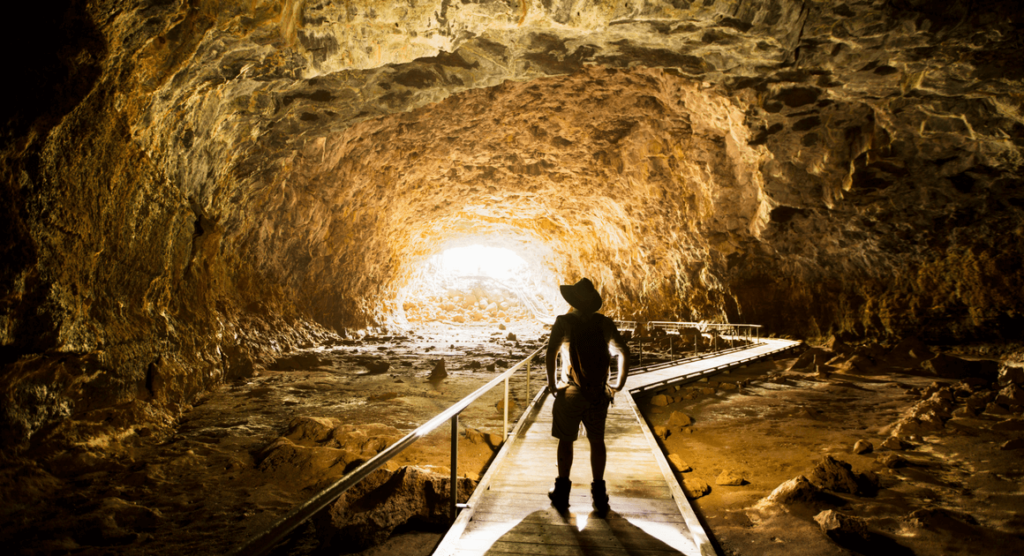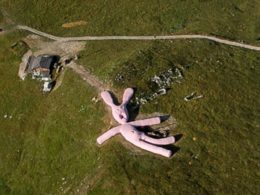We always associate natural disasters with damage and destruction. However, there are certain instances when natural disasters left behind something that nobody could imagine. Those leftovers have become extremely attractive places to visit. Here are the instances where natural disaster created something beautiful to watch once in your lifetime.
Yellowstone National Park:

Flourished with boundless flora and fauna, Yellowstone National Park is almost 800-miles away from Crater Lake. This spot earns its fame by the famous geyser “old faithful”. The natural geyser almost regularly erupts up to 185-feet approximately. Before it was a park, this place was surrounded by three massive eruptions around 2.1-million years back. The explosion caused by these three eruptions is 6000-times impactful than the eruption strength of the 1980 Mt. Helens eruption.
Okavango Delta:

With its unique scenic beauty and immeasurable ecosystem, Okavango Delta is located at the base of Okavango River from the Kalahari Desert. Acknowledged as a distinctive World Heritage site for Safari, the delta has eye-soothing crystal clear blue water with the vast composition of African greenery and orange sand of Kalahari. Just like any other river, Okavango once flowed down in the direction of the ocean through large lakes. The flood-tide from Angola maintains a continuous stream to the delta.
Ujung Kulon-Krakatoa:

Place for an almost-extinct rhino species, this national park of Indonesia is also a home for 57 rare plants. Renowned as a World Heritage site, the key point of attraction is the dormant volcano Krakatoa. Last erupted in 1883, this volcano took away the lives of 36,000 people. The sound of the explosion reached about the range of 3,000 miles. This sound was the loudest noise on the planet. This eruption also results in a pure ecosystem and flourishing green rainforests as well.
Undara Lava Tubes:

Situated in Australia, Undara is one of the largest lava tubes in this planet which is 20-miles. The collapsed roof of the tube passes the sunlight to the species who survive there. This place includes 4 species of bats and common wallaroo. A volcanic eruption with 23.3-kilometers of lava flow traveled over 100-miles each second to form this tube. This tub has the dense semi-evergreen vine dated back to the ancient supercontinent of Gondwanaland.
Crater Lake:

With its deep blue waters and lush green pines, Crate Lake adds more mystery to the Pumice castle and Wizard’s Island. The lake has hemlock, namely ‘The old man of the lake’ who floats on the water is rare to spot and it tells a tale about the natural calamity the place faced caused by volcanic eruption dated back to 7700 years. This lake takes 250-years of rainwater to fill.
Mediterranean Messinian Salinity Crisis:

A very big flood twisted and turned the history of the islands of the Mediterranean Sea. The Zanclean flood changes the Mediterranean desert into the sea by disconnecting it with the ocean with the help of Gibraltar straits dated back to 5.6-million years. It is said that 90% of the basin was filled within 2-years with the flow-rate of 10-meter/day.
Yucatan Cenotes And The Chicxulub Asteroid:

The sinkholes found in Yucatan Peninsula Mexico are unique and famous for the turquoise water with a double layer of clean underground water and saltwater. These layers do not mix and they stay visibly clear years and years. These cenotes are there from the time of Mayans. They used to use these sinkholes for worshipping and sacrificed their artifact to the natural well. An asteroid namely Chicxulub Asteroid created this place. It was wide enough to create a ring around the Yucatan Cenotes, about 240-kilometers.












